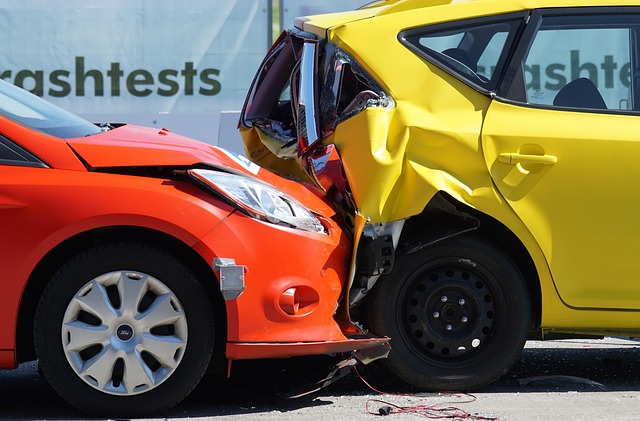General Liability insurance protects against diverse risks causing harm or damage, including accidents, injuries, and property damage. It covers legal defense costs, medical expenses, and compensation for injured parties. This coverage is vital in today's litigation-prone environment, shielding businesses from financial instability due to property damage claims. Understanding the legal implications of negligence or intentional acts is key, as these can lead to liability for slip-and-fall accidents, product defects, and construction errors. Businesses can mitigate risks through safety inspections, maintenance, staff training, and tailored insurance policies. The "General Liability for Property Damage" section provides real-world case studies, emphasizing the strategic importance of risk management in business operations.
General Liability insurance is a cornerstone of risk management, protecting businesses from financial loss due to claims of property damage. This comprehensive guide delves into the intricate world of general liability, exploring its key components, from understanding property damage definitions to the legal implications and role of insurance in risk mitigation. We analyze common scenarios leading to claims, present effective risk management strategies, and offer valuable case studies for real-world lessons.
Understanding General Liability: A Comprehensive Overview

General Liability, a cornerstone of risk management and insurance, is a legal concept that holds individuals, businesses, or organizations accountable for any harm or damage they may cause to others or their property. This all-encompassing coverage is designed to protect against a wide range of potential risks and losses. When it comes to property damage, General Liability plays a pivotal role in mitigating financial exposure and ensuring legal protection.
It provides a safety net for various scenarios, including accidents, injuries, or damages occurring on your premises, those caused by your products, or even personal and advertising injuries you might be held responsible for. Understanding this liability type involves grasping its broad scope, which includes legal defense costs, medical expenses, and compensation for the injured party. This comprehensive approach to risk management is essential in today’s world, where businesses operate within a complex legal landscape.
What is Property Damage? Defining the Scope

Property damage, in the context of general liability, refers to any physical harm or deterioration to someone else’s property. This can include a wide range of incidents such as accidental fires, water damage from leaks, or intentional vandalisms. The scope of property damage is vast and can encompass both tangible and intangible forms. Tangible damage involves visible alterations to structures or possessions, while intangible damage might relate to the loss of use or impairment of value due to non-physical changes.
When discussing general liability for property damage, it’s crucial to understand that coverage typically extends to damages arising from various sources. These include accidents, negligently maintained premises, defective products, and even deliberate acts of vandalism. The key is to recognize when an incident results in tangible or intangible harm to another person’s property rights, as this triggers the need for compensation and falls under general liability insurance provisions.
The Role of Insurance in Mitigating Risks

In today’s world, where litigation and legal costs can soar, insurance plays a pivotal role in risk mitigation for businesses dealing with general liability claims, particularly those related to property damage. It acts as a financial shield, offering protection against potential losses arising from accidents, mishaps, or injuries on premises owned or operated by the insured entity. By purchasing comprehensive general liability coverage, business owners can safeguard their assets and ensure financial stability in case of unforeseen events.
Insurance policies for general liability provide a safety net that covers legal fees, settlement costs, and damages awarded in property damage cases. This proactive measure allows businesses to navigate legal complexities with confidence, knowing they have the necessary backing to minimize financial strain. Moreover, insurance companies often offer risk assessment services, helping businesses identify vulnerabilities and implement measures to prevent property damage before it occurs.
Legal Implications and Potential Liabilities

When it comes to general liability for property damage, understanding the legal implications is paramount. If a business or individual causes damage to someone else’s property due to negligence or intentional acts, they can be held liable. This includes scenarios like slip-and-fall accidents, product defects leading to property destruction, or even structural failures caused by construction errors. The scope of liability can extend to both direct and indirect damages, such as repair costs, replacement expenses, and, in some cases, loss of use of the affected property.
These legal implications go beyond financial compensation. Businesses may face legal suits, leading to hefty settlements or judgments if found negligent. To mitigate these risks, it’s crucial to implement robust safety measures, regular maintenance routines, and comprehensive insurance policies tailored to cover general liability claims related to property damage.
Common Scenarios Leading to Property Damage Claims

Property damage claims are a significant aspect of general liability, arising from various scenarios that can impact businesses and individuals alike. Common triggers for such claims include accidents involving vehicles, construction sites where equipment or materials cause harm, and premises with hazardous conditions like slippery floors or uneven surfaces. For instance, a customer slipping and falling on wet pavement outside a retail store could lead to a property damage lawsuit against the business owner. Similarly, a contractor’s negligence in securing building materials stored on a job site might result in damages when those items are blown onto neighboring properties during a storm.
Understanding these potential risks is crucial for businesses aiming to mitigate general liability exposure. Regular safety inspections, proper maintenance, and clear hazard communication can significantly reduce the likelihood of property damage incidents. Additionally, having comprehensive insurance coverage tailored to specific business activities ensures that financial repercussions are manageable should a claim arise.
Strategies for Risk Management and Prevention

Implementing robust risk management strategies is paramount for businesses aiming to mitigate General Liability claims related to property damage. A comprehensive approach begins with thorough risk assessments, identifying potential hazards within operations and facilities. Once identified, proactive measures can be taken. This includes regular maintenance, ensuring proper training for staff on safety protocols, and implementing robust health and safety regulations.
Additionally, staying up-to-date with industry standards and legal requirements is vital. Investing in adequate insurance coverage tailored to the business’s specific needs protects against financial losses in the event of property damage incidents. Regular audits and reviews of risk management strategies are essential to adapt to evolving risks and ensure continuous improvement.
Case Studies: Real-World Examples and Lessons Learned

General Liability for Property Damage offers a crucial lens into real-world scenarios where businesses and individuals face consequences of their actions. Case studies provide tangible examples that illustrate the practical application of general liability principles. For instance, consider a construction company responsible for a site where a worker’s negligence results in property damage to a neighboring building during renovation. This scenario underscores the importance of proper site management and contractual clauses that clearly define liability boundaries.
Through such cases, key lessons emerge. First, proactive measures like comprehensive insurance policies and rigorous worker training can mitigate risks. Second, clear communication and detailed contracts with clients and subcontractors are vital for establishing accountability. These real-world examples not only highlight the economic implications but also serve as a reminder that minimizing property damage liabilities is not just about legal compliance but also strategic business management.
